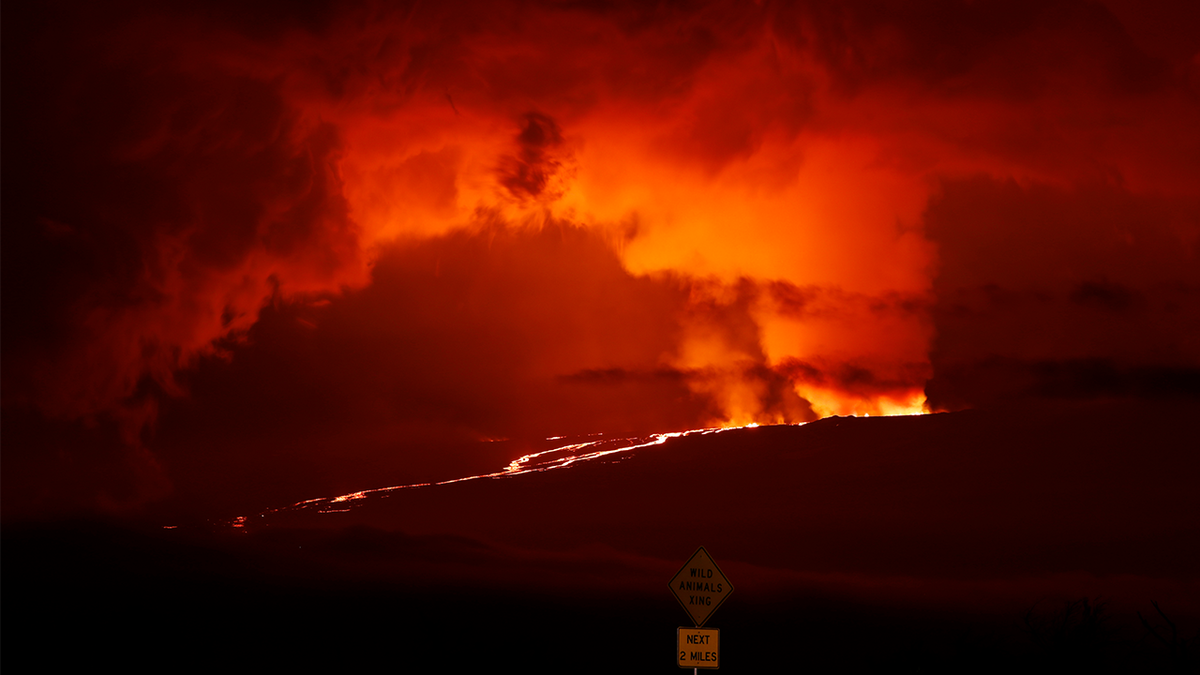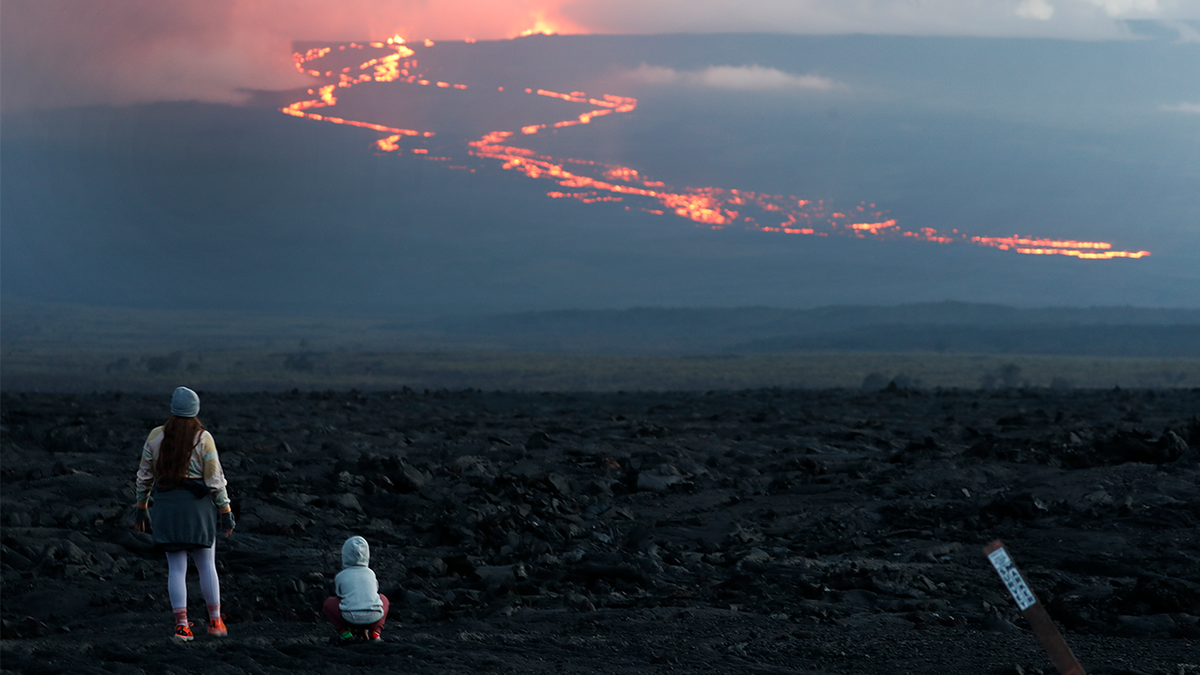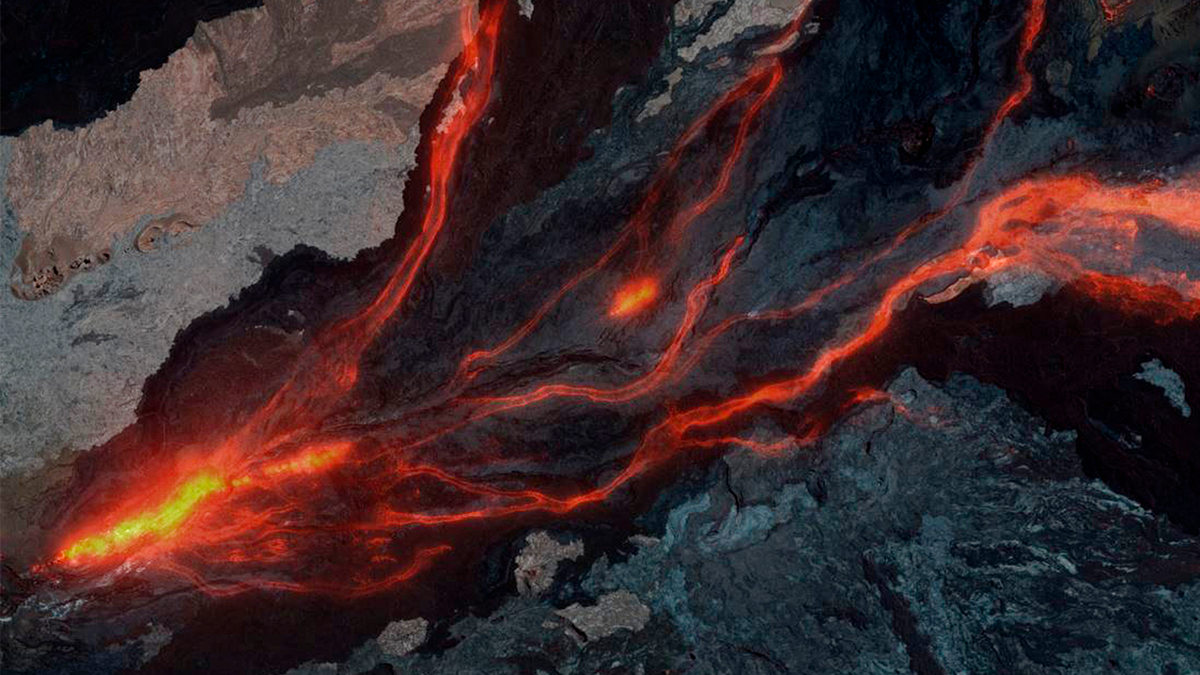Mauna Loa eruption begins in Hawai‘i Volcanoes National Park
Bystander video shows the beginning of the Mauna Loa eruption on Hawaii's Big Island.
Hawaii's Mauna Loa volcano erupted for the first time in 38 years over the weekend, attracting some people to the view while concerning others who have dealt with prior volcano experiences.
Officials initially feared that lava flowing down the side of the world's largest volcano would head toward South Kona, but scientists later said the eruption moved to a rift zone on the volcano's northeast flank and that it was not a threat to any communities.
There were no evacuation orders from officials, but some people still decided to leave their homes as a precaution, leading officials to open shelters in the Kona and Kau areas. Few people remained in the shelters in them overnight, and they closed Tuesday, Hawaii County Mayor Mitch Roth said.
Hawaiian Volcano Observatory scientist Ken Hon said Tuesday that the lava from the volcano was flowing at less than 1 mph, although it was not clear what the exact sapped was. The lava was moving downhill about 6 miles from Saddle Road, which connects the east and west sides of the island, and the flow was expected to slow down about 4 miles from the road as it reaches flatter ground.
HAWAII'S MAUNA LAO: AERIAL VIDEO SHOWS LAVA FLOW FROM SUMMIT, AS HISTORIC ERUPTION DRAWS TOURISTS

A river of lava flows down from Mauna Loa, Monday, Nov. 28, 2022, near Hilo, Hawaii. Mauna Loa, the world's largest active volcano erupted Monday for the first time in 38 years.
It was unclear when or if the lava will hit the road. It could hit flatter ground later Tuesday or Wednesday, Hon said.
"We're not even sure it will reach the highway, but that is certainly the next step in progress if it continues on these trends," Hon said. He also noted that there is a possibility a fissure could open up and drain away some of the supply feeding the flow.
Residents could smell the thick volcanic gases and sulfur that were in the air Tuesday along Saddle Road. People along the road watched a wide stream of lava move closer. A large plume of gas and ash rising from an open summit vent above the flow was also seen after the clouds cleared.
"We're thankful the lava flow is not affecting residential areas at this time, allowing schools and businesses to remain open," Hawaii Gov. David Ige, D, said in a statement. "I'm issuing this Emergency Proclamation now to allow responders to respond quickly or limit access, if necessary, as the eruption continues."

Spectators watch the lava flow down the mountain from the Mauna Loa eruption, Tuesday, Nov. 29, 2022, near Hilo, Hawaii.
The volcano eruption drew visitors to Hawaii Volcanoes National Park, according to park spokeswoman Jessica Ferracane, who said the viewing has been "spectacular," especially before sunrise and at night.
Visitors could witness both the glow from Kilauea's lava lake and lava from a Mauna Loa fissure.
"This is a rare time where we have two eruptions happening simultaneously," Ferracane said.

Waves of orange, glowing lava and ash blasted and billowed from the world's largest active volcano in its first eruption in 38 years, and officials told people living on Hawaii's Big Island to be ready in the event of a worst-case scenario. (Maxar Technologies via AP)
Meanwhile, people in the northern Hilo neighborhood closest to the Mauna Loa eruption were cautious, but not overly scared.
"If you were to look around my property you would see lava rock formations sticking out," Mauna Kea resident Thomas Schneider said. "We live on an active volcano, so everywhere is kind of a lava zone."
The Associated Press contributed to this report.



